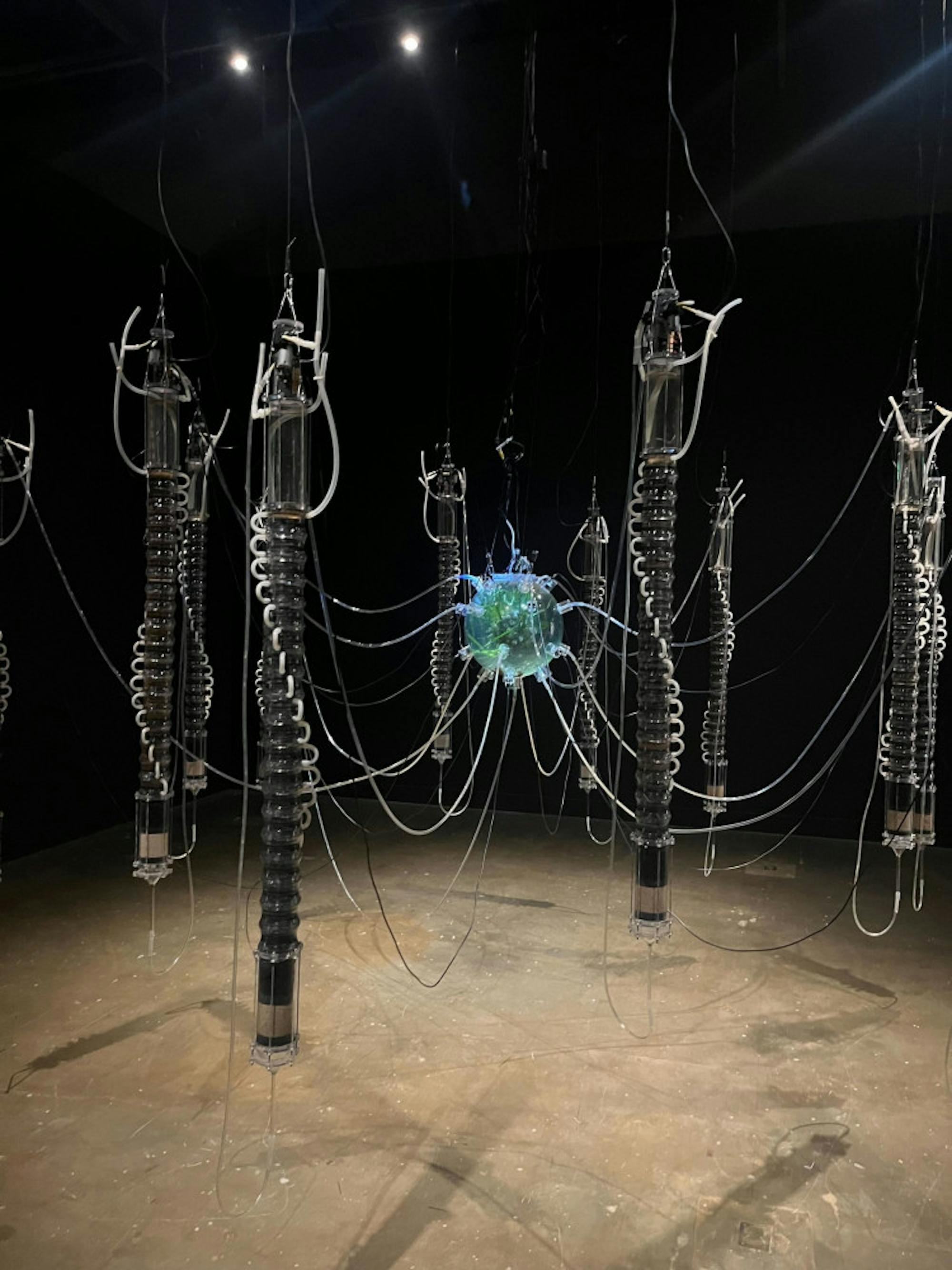A few minutes away from the Kendall/MIT Red Line stop and free to the public, the MIT List Visual Arts Center is an accessible and intimate space to see art in Greater Boston.
Not to be confused with the MIT Museum a few blocks away (as I initially did), which provides a wide range of artifacts and media explicitly related to science and technology, the List Visual Arts Center showcases a smaller selection of contemporary art. List curators typically dedicate their galleries to individual artists, which often serves as an artist’s first solo exhibit. With distinct concepts presented in each gallery space, the museum provides a cohesive experience for its visitors, highlighting themes that connect different pieces. Housed in a building designed by I.M. Pei, the List Visual Arts Center also offers digital and printed guides to permanent sculptures and art installations around the museum.
Beyond brochures and a mobile guide to their displays, the List Visual Arts Center also holds free public events including artist panels, curator-led tours and talks from graduate students related to the current exhibits, which are also viewable online.
The List Visual Arts Center’s most recent major exhibit, which closed on Feb. 26, was “Symbionts: Contemporary Artists and the Biosphere,” an exhibit featuring multi-media art from different international artists that explores how humanity is limited by and connected to biology. Organic materials and imagery were included in much of the work, often physically interweaving human physiology and technology with other forms of life in surprising ways. The backstories of the human and non-human organisms behind the work challenge human-centric, purely academic views of biology.
Memorable works include Nour Mobarak’s “Reproductive Logistics” (2020), which, according to the museum guide, links ideas about human reproduction with the reproduction within art. This nontraditional “self portrait” includes an art-shipping crate, human sperm from the artist’s past lovers and material from fungi. The artist included the fungi due to its ability to reproduce sexually and asexually depending on its environment, representing her own role as an artist.
Miriam Simun’s video piece “Interspecies Robot Sex” (2022) intersperses footage of hand-pollination of pear trees in orchards in the Anhui Province of China with footage of the testing of mechanical bee prototypes in Harvard Labs, contrasting the natural beauty and sense of community of the farm in China with the sterility of the engineered bee.
Jes Fan’s sculpture “Systems II” (2018)includes synthetically produced forms of melanin and sex hormones encased in glass, pushing against how “these substances are taken up by biopolitical systems to racialize and other bodies based on skin color and gender presentation,” according the museum brochure.
The exhibit also included “Plantas autofotosinthéticas” (2013-2014)by Gilberto Esparza, which incorporates wastewater collected from around the Boston area, which is decomposed by bacteria. Bacterial metabolism is harnessed to fuel a light that allows plants contained in the center of the sculpture to photosynthesize. The model is similar to Earth itself with its cyclical and interdependent transfer of energy, MIT graduate student Madeline Moore noted in her talk explaining the biology of the piece. In addition, it models an alternative mode of energy production that is sustainable, in contrast to the extractive fossil fuel-reliant energy sources that much of modern infrastructure relies on.
Another recently opened exhibit at the list galleries is List Projects 26, which features pieces by filmmaker and artist Alison Nguyen, whose work focuses on how media impacts memory and lived experience. A video installation of her work “history as hypnosis” (2023) tells the story of women reprogrammed by AI making their way through California, which the artist connects to the experience of Vietnamese immigrants coming to America after the Vietnam War. Nguyen’s work is a story of “cultural assimilation and their gestures in defiance of that process,” according to the museum brochure. Alison Nguyen will also be giving a talk alongside a screening of her film “Andra8: my favorite software is being here”(2020-2021) at the List Center in May.
Other upcoming events at the MIT List Visual Arts Center include film screenings and conversations with female directors put on by the Consortium for Graduate Studies in Gender, Culture, Women, and Sexuality at the Women Take the Reel Film Festival in Boston, including “Belly of the Beast” (2020) on March 15, a film about resistance against forced sterilization in the California prison system. On March 21, the List Center will also host a conversation with the director of the documentary “Fly So Far” (2021), a film about women who were imprisoned for having miscarriages by the government in El Salvador and fought to be freed.
Starting with an opening reception on April 4, the museum will open two exhibits: Sung Tieu: Civic Floor, which focuses on spatial narratives including the potentially bureaucratic and political nature of the built environment, and Lex Brown: Carnelian, which focuses on approaching pressing social issues through parody-based media.
An underappreciated gem of the Greater Boston art scene, make sure to add the MIT List Visual Arts Center to your list.






